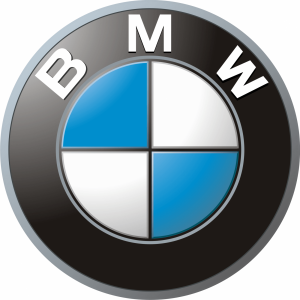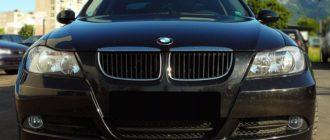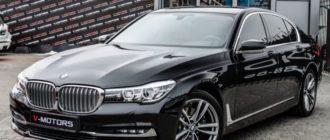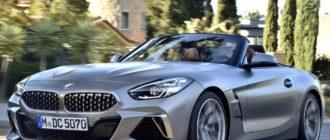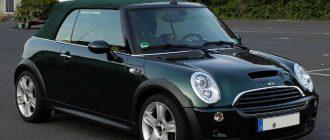Sport cars for a wide range of consumers have been produced by the Bavarian automotive concern for more than a dozen years. The first worthy car is the BMW M3 in the 30th body, which set the bar in this segment. In 1993, it was succeeded by the model M3 in the 36th body. Essentially, the BMW M3 E36 is a completely reworked thirty. Changes affected the exterior, interior, and suspension. Several body types were offered — a convertible with a soft roof, a coupe, a sedan.
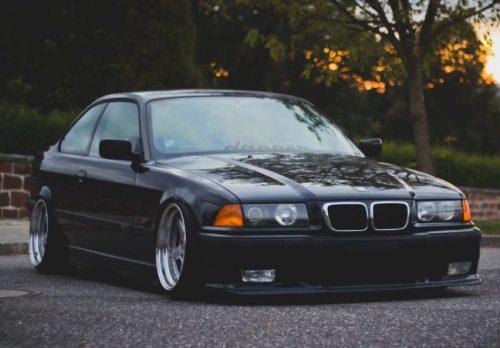
Exterior of BMW M3 E36
The front bumper immediately catches the eye — it has openings necessary for supplying air to the front brake discs. The car is sporty, so it should have high speed. Therefore, considerable effort will be required to stop. These air intakes look elegant on the car.
On the side moldings, you can see the familiar letter «M» for the series. The same emblem was placed on the trunk lid. The car stands out in the general flow — that's what owners were waiting for.
The M3 series cars were equipped with streamlined mirrors, original side skirts. It's worth mentioning them separately — they are streamlined, providing greater downforce. The result is a more stable car when cornering even at high speeds.
From the factory, wheels with R17 tires were installed: front — 225 mm, rear — 224 mm. The length of all bodies (convertible, coupe, and even sedan) is 4432 mm, width — 1796 mm, and wheelbase 2700 mm. The sedan is taller than other versions — 1366 mm. The coupe and convertible are only 30 mm lower.
The first cars in the series, which were equipped with S50B30 engines, had a curb weight of 1420 kg. The later versions of the BMW M3 E36 were equipped with S50B32 engines, resulting in an increase in weight of about 40 kg.
Designers have abandoned excessively wide wheel arches and a large spoiler. As it turned out, this move allowed to gain new positions in the market later on. All exterior elements are of aerodynamic design. This gives the car a sporty look and aggressiveness. The car's dynamics benefit from such an exterior.
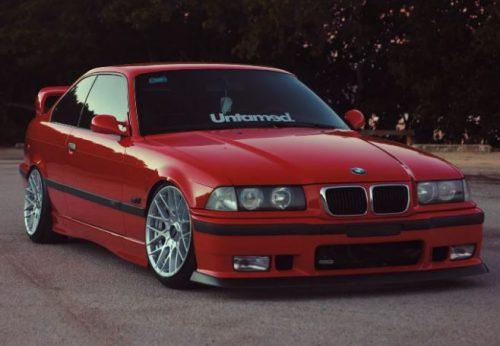
The rear bumper of the BMW M3 E36 became more massive compared to its predecessor. The large exhaust pipe immediately attracts attention. A beautiful sporty engine roar, not a sound from the muffler — this rule is followed in the car.
The brakes stand out brightly on the car, as they were specially designed for use in this series. Stopping from a speed of 100 km/h takes only 2.8 seconds and no more than 35 meters.
Interior of the Car
Judging by the reviews of the car in this series, it can be understood that almost everyone likes the interior. The dashboard is well laid out, it is comfortable to sit not only for the driver but also for the passenger. Only the passengers in the rear seats will have to squeeze a bit. It is understandable, as the car aimed to be sporty, not family-oriented. Incredibly large trunk — 405 liters. And this is considering it is a coupe body. Sports cars usually have much less volume.
The M3 model was developed primarily for body racing. But BMW designers did not overlook the issues of everyday use of the car. The result is a successful combination of comfort and excellent dynamics.
The predecessor (M3 E30 version) was clearly not intended for carrying passengers in the rear seats — it was very tight for them there. In the new modification, this problem was eliminated, and in the coupe body, passengers in the rear seat feel relatively comfortable.
A four-door sedan is the dream of many drivers who want it all at once. An excellent car was created that combines all the advantages of a sports car and a family car. In the sedan's interior, you can find decorative wood inserts, leather seats made specifically for this series.
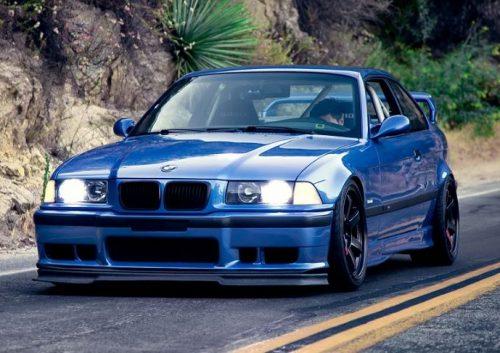
The BMW M3 E36 became the most popular of its time. Numerous debuts at various exhibitions, awards, and titles — all this the Bavarian automotive concern received after the release of this model.
Read more: Review of BMW M6 Coupe (F13)
Engines of BMW M3 E36
Under the hood is a true masterpiece! The first modifications were equipped with 3-liter S50B30 engines. The stock version includes individual throttle bodies for each cylinder.
Thanks to this and a well-thought-out exhaust system, high-quality polishing of all channels in the cylinder head, boring, the six-cylinder engine accelerates excellently. Engine specifications:
- Power 286 hp.
- Torque — 320 Nm.
- Acceleration time to 100 km/h — 6.0 sec.
- Stopping time from the same speed — 2.8 sec.
In later versions, S50B32 engines were installed, with a volume of 3.2 liters. To increase the volume, engineers installed a crankshaft with a stroke of 9.1 cm in the cylinder block of the S50B30 engine. In addition, the cylinder diameter was increased to 86.4 mm. To increase power, graphite-coated connecting rods were used, and the pistons were lightened. The compression ratio in the cylinders is 11.3.
Changes also affected the cylinder head of the BMW M3 E36. This is the first engine to be equipped with the Double-VANOS system, allowing continuous variation of the intake and exhaust camshaft phases. The intake valves have also increased in size — on the new engine, they have a diameter of 35 mm. The rod has become thinner by 1 mm (6 mm).
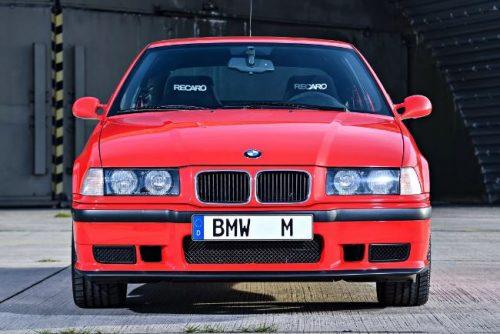
Engineers did not overlook the exhaust system and the dual-mass flywheel. The engine is controlled by the MSS50 electronic control unit produced by Siemens. These innovations allowed achieving incredible performance. The standard engine for a city car developed a colossal power — 321 hp. and a maximum torque of 350 Nm. And this is without using a turbine.
Failures Revealed After Decades of Use
Behind all these figures hides one drawback — the engines are prone to overheating. Therefore, when the temperature rises, the entire cooling system will need to be overhauled — the pump, thermostat, radiator.
Overheating often occurs due to the appearance of airlocks in the system or the destruction of the radiator cap. Overheating is dangerous because it can cause the cylinder head to fail. Microcracks may appear, which are not visible to the naked eye but will affect the engine's operation.
Also, sometimes one cylinder fails while the engine is running. Typically, this happens due to ignition coils, injectors, or spark plugs. Therefore, constant monitoring of the ignition system and fuel delivery is necessary.
The DME valve adds problems — it causes the engine speed to fluctuate. Sometimes cleaning the valve and throttle body helps. But if this measure does not help, the condition of the throttle position, oxygen, and temperature sensors should be diagnosed.
The innovative VANOS system at that time may cause trouble for BMW M3 E36 owners. Power decreases, engine speeds fluctuate, and extraneous noises appear during engine operation. To eliminate the system malfunction, it will be necessary to completely repair it.
The engine can consume up to a liter of oil per 1000 km, and sometimes even a major overhaul does not help. The reason usually lies in leaks in the oil pan or valve cover. Oil often leaks through the dipstick hole.
The expansion tank may crack, leading to fluid leakage, resulting in excessive heating and the formation of airlocks. Crankshaft and camshaft position sensors are also not known for their reliability.
To be fair, it is worth noting that we are talking about cars that were produced more than 20 years ago. And to this day, they run on original components. All of these breakdowns can occur if the car's mileage exceeds 500,000 km.
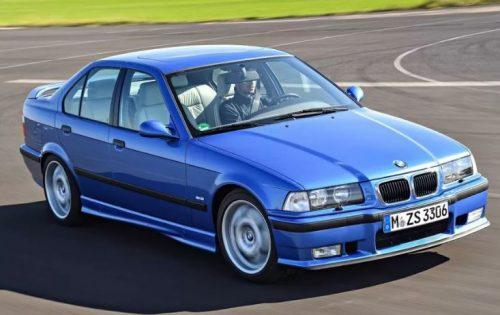
If you happen to buy a low-mileage car, with proper care, it will serve faithfully for at least 10 years. And no problems will arise. Even rigorous use of the car is not a reason for frequent repairs. Engines in such conditions can run up to 400,000 km without repairs.
Car Equipment
The standard equipment of the BMW M3 E36 can boast a powerful braking system. German engineers are concerned about safety primarily. Turn-disc brake calipers, ventilation present on all wheels. Also, the standard version includes an improved ABS system that enhances the car's performance.
The four-seater convertible, presented to the public in 1994, also had several options in the base version. It was on this car that rollover protection was first applied. There had never been such protection on similar cars before.
A rigid windscreen frame and two bars mounted behind the rear seat headrests (not visible at first glance) in the event of a rollover help protect people inside the cabin. Additionally, the car has a position sensor that activates these safety bars.
In 1997, a minor facelift was carried out. The appearance was slightly changed, an automated SMG gearbox was installed. Also, in 1997, the model began to be equipped with a 3.2-liter engine.
Production of the BMW M3 E36 series was discontinued in 1999. Over the years, more than 71,000 cars were produced. The convertible and coupe bodies were used in the next generation — the M3 E46 modifications. However, the sedan was replaced later in the M3 E90 modification.
